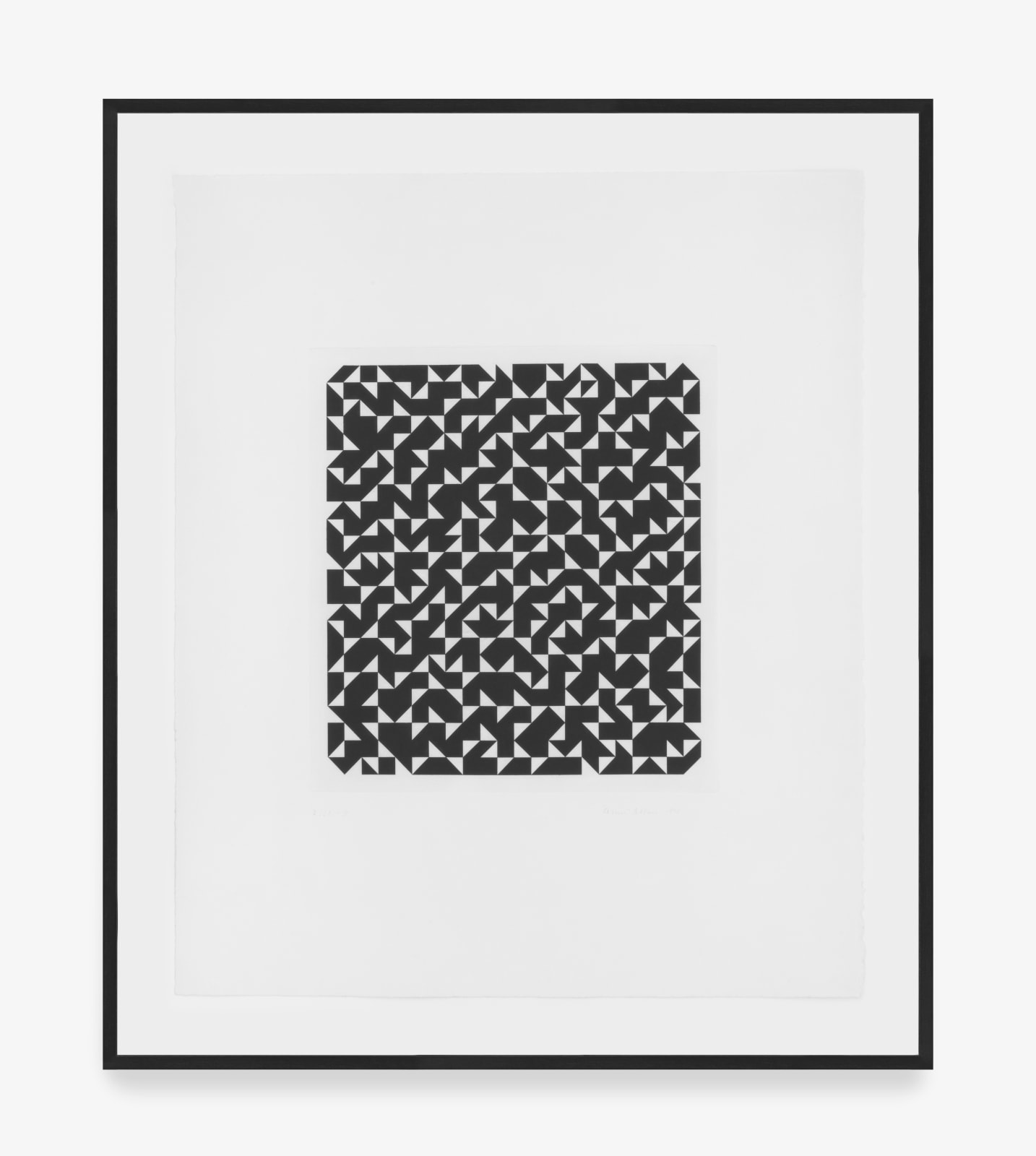-
Anni Albers
Triangulated Intaglio II, 1976Single-color copper plate etching and aquatint on mould-made white Arches Cover24 x 20 in (61 x 50.8 cm)Edition of 20, plus 9 AP© 2025 The Josef and Anni Albers Foundation / Artists Rights Society (ARS), New York. Courtesy of Zeit Contemporary Art, New York.Further images
A pivotal figure of twentieth-century modernism and textile art, Anni Albers extended her experimental impulse to the domain of printmaking, enriching her exploration of abstract compositions and intricate patterns. 'Triangulated...A pivotal figure of twentieth-century modernism and textile art, Anni Albers extended her experimental impulse to the domain of printmaking, enriching her exploration of abstract compositions and intricate patterns. 'Triangulated Intaglio II,' a print that exudes her profound understanding of geometry and abstraction, offers a window into this dialogue between medium and motif. Albers's engagement with printmaking was not a departure from her textile work but rather a continuation of her inquiry into structure, form, and visual interaction. The stark contrast and interplay of black and white shapes in the artwork mirror the binary oppositions found in weaving, with positive and negative spaces vying for dominance, creating an arresting visual rhythm.In this piece, the intaglio technique, which involves incising a design onto a metal plate, becomes a testament to Albers's respect for craftsmanship and tradition. By the mid-20th century, intaglio was regarded as somewhat archaic, yet Albers's choice to employ it speaks to her reverence for historical practices and her innovative approach to them. Intaglio allowed Albers to manipulate the depth of her lines, creating a texture reminiscent of the tactile quality of fabrics. 'Triangulated Intaglio II' showcases the sublime precision this technique affords; each triangle is rendered with such crispness that it seems to weave in and out of the page, an echo of warp and weft, demonstrating Albers's unique ability to transpose the principles of textile design onto paper with astonishing clarity and depth.
The visual impact of 'Triangulated Intaglio II' lies in its rhythmic geometry, where the array of triangles forms a maze-like network that captivates and confounds the eye. Albers's print plays with the viewer's perception, as the black forms appear to advance and recede, creating a dynamic optical effect. The artwork is a ballet of contrasts and continuity, a testament to Albers's dedication to the confluence of art and craft. Her work deftly bridges the tactile sensibility of textiles with the visual language of prints, rendering the two inseparable and equally significant in the lexicon of abstract art. Albers not only recovered an early printmaking technique but elevated it, crafting a legacy that defies the confines of medium and period, etching her vision into the annals of art history with the same precision as her intaglio plates.
Other examples of this crucial etching are housed in the esteemed collections of the Walker Art Center, Minneapolis, MN, The Brooklyn Museum, NY, The Ruth and Elmer Wellin Museum of Art, Hamilton College, Clinton, NY and The Josef and Anni Albers Foundation, Bethany, CT, among others.
NOTES
Image: 13 x 12 in (33 x 30.5 cm)
Sheet: 24 x 20 in (61 x 50.8 cm)
This artwork is signed, dated and numbered in pencil, from the edition of 20, plus 9 artist's proofs.Provenance
Private collection, United States
Private collection, New York
Exhibitions
Clinton, NY, The Fred L. Emerson Gallery, Hamilton College, Highlights from the Hamilton College Collection, June 5 - September 6, 1992 (cat. no 160, another example exhibited).
Clinton, NY, The Ruth and Elmer Wellin Museum of Art, Hamilton College, Affinity Atlas, October 6, 2012 - April 7, 2013 (another example exhibited).
Clinton, NY, The Ruth and Elmer Wellin Museum of Art, Hamilton College, Innovative Approaches, Honored Traditions: The Ruth and Elmer Wellin Museum of Art at Five Years, Highlights from the Permanent Collection, September 9 - December 10, 2017 (cat. no. 103, another example exhibited and illustrated).
New Britain, CT, New Britain Museum of American Art, In Thread and On Paper: Anni Albers in Connecticut, March 19 - September 13, 2020, pp. 3-4 (another example exhibited and illustrated).
Syracuse, NY, Syracuse University Art Museum, Anni Albers: Work with Materials, August 25 – December 11, 2022 (another example exhibited).
Literature
Brenda Danilowitz and Nicholas Fox Weber. The Prints of Anni Albers: A Catalogue Raisonne, 1963-1984. Bethany, CT: The Josef and Anni Albers Foundation, 2009, no. 43, p. 106 (another example illustrated, p. 107).
Edouard Detaille and Willem van Roij (eds.). You can go anywhere. The Josef and Anni Albers Foundation at 50. Bethany, CT: The Josef and Anni Albers Foundation, 2022, p. 271 (another example illustrated).






